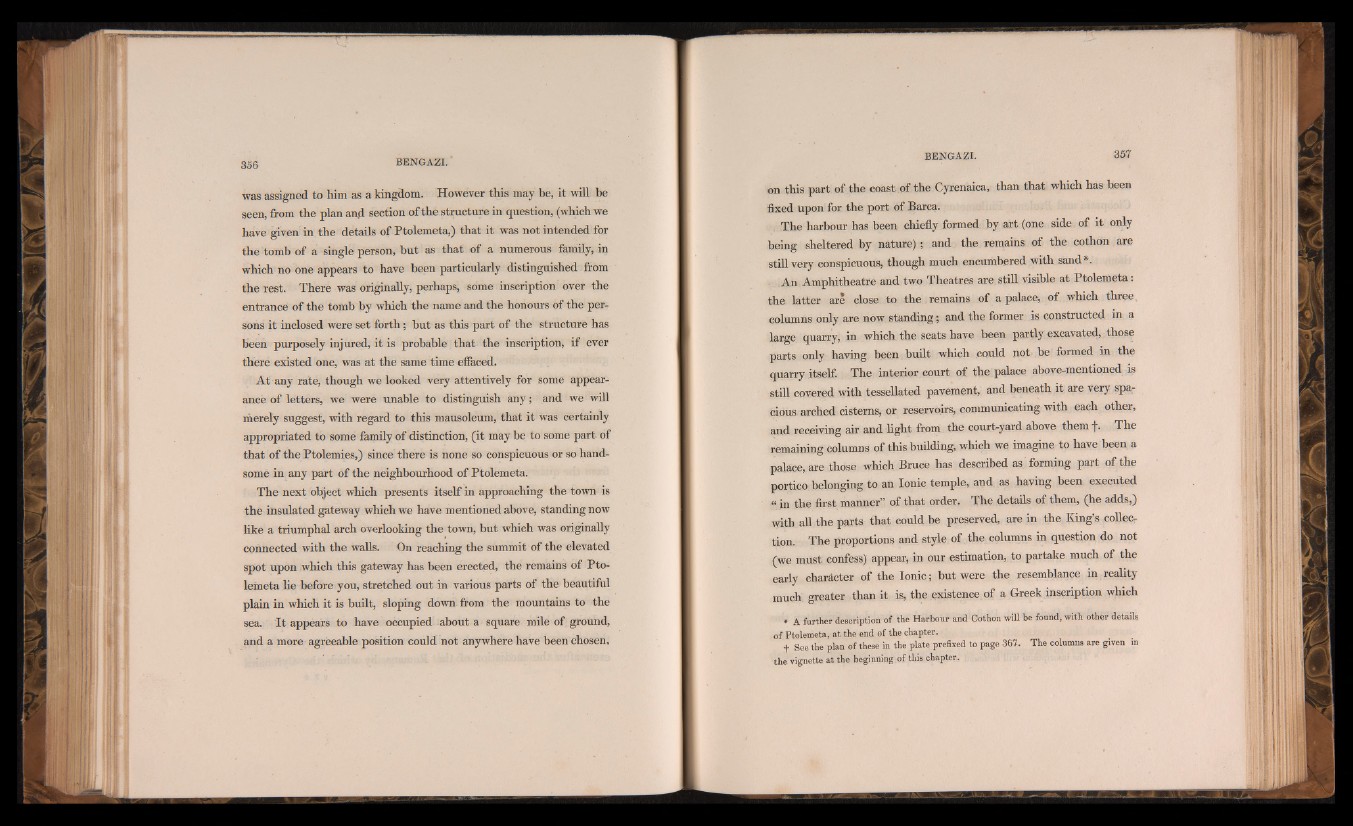
356
was assigned to him as a kingdom. However this may be, it will be
seen, from the plan and section of the structure in question, (which we
have given in the details of Ptolemeta,) that it was not intended for
the tomb of a single person, but as that of a numerous family, in
which no one appears to have been particularly distinguished from
the rest. There was originally, perhaps, some inscription over the
entrance of the tomb by which the name and the honours of the persons
it inclosed were set forth; but as this part of the structure has
been purposely injured, it is probable that the inscription, if ever
there existed one, was at the same time effaced.
At any rate, though we looked very attentively for some appearance
of letters, we were unable to distinguish any; and we will
merely suggest, with regard to this mausoleum, that it was certainly
appropriated to some family of distinction, (it may be to some part of
that of the Ptolemies,) since there is none so conspicuous or so handsome
in any part of the neighbourhood of Ptolemeta.
The next object which presents itself in approaching the town is
the insulated gateway which we have mentioned above, standing now
like a triumphal arch overlooking the town, but which was originally
connected with the walls. On reaching the summit of the elevated
spot upon which this gateway has been erected, the remains of Ptolemeta
lie before you, stretched out in various parts of the beautiful
plain in which it is built, sloping down from the mountains to the
sea. I t appears to have occupied about a square mile of ground,
and a more agreeable position could not anywhere have been chosen,
on this part of the coast of the Cyrenaica, than that which has been
fixed upon for the port of Barca.
The harbour has been chiefly formed by art (one side , of it only
being sheltered by nature).; .and the remains of the cothon are
still very conspicuous, though much encumbered with sand*.
An Amphitheatre and two Theatres are still visible at Ptolemeta:
the latter are close to the remains of a palace, of which three
columns only are now standing; and the former is constructed in a
large quarry, in which the seats have been partly excavated, those
parts only having been built which .could not be formed in the
quarry itself. The interior court of the palace above-mentioned is
Still covered with tessellated pavement, and beneath it are very spacious
arched cisterns, or reservoirs, communicating with each other,
and receiving air and light from the court-yard above them j\ The
remaining columns of this building, which we imagine to have been a
palace, are those which Bruce has described as forming part of the
portico belonging to an Ionic temple, and as having been executed
“ in the first manner” of that order. The details of them, (he adds,)
with all the parts that could be preserved, are in the King’s collection.
The proportions and style of the columns in question do not
(we must confess) appeal-, in our estimation, to partake much of the
early character of the Ionic; but were the resemblance in reality
much greater than it is, the existence of a Greek inscription which
» A further description of the Harbour and Cothon will be found, with other details
of Ptolemeta, at the end of the chapter.
+ See the plan of these in the plate prefixed to page 367. The columns are given in
the vignette at the beginning of this chapter .